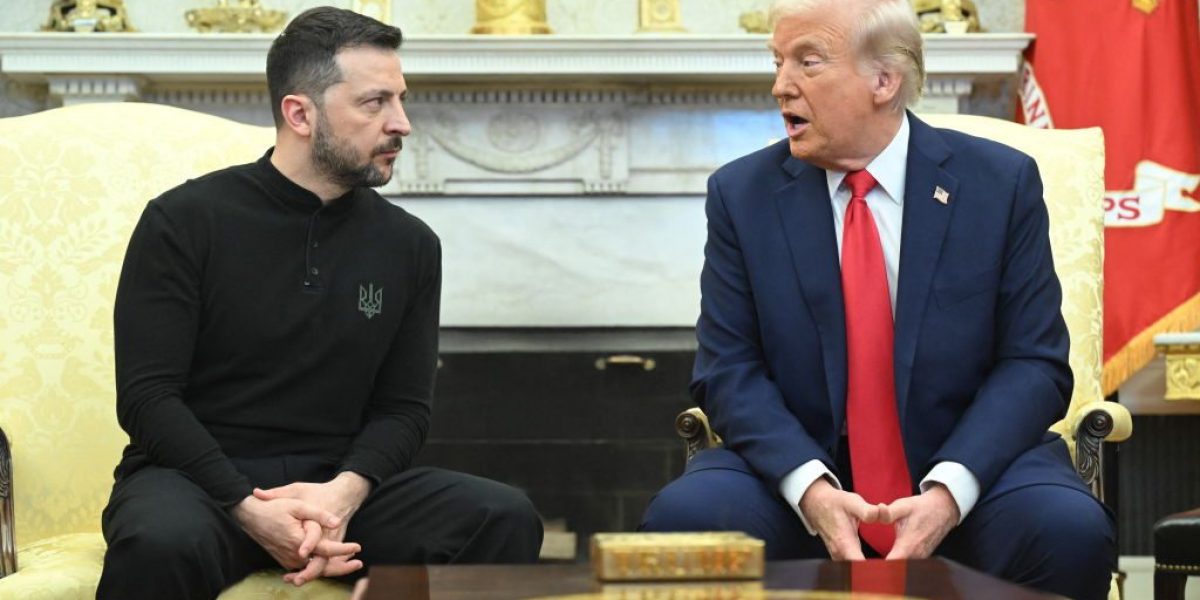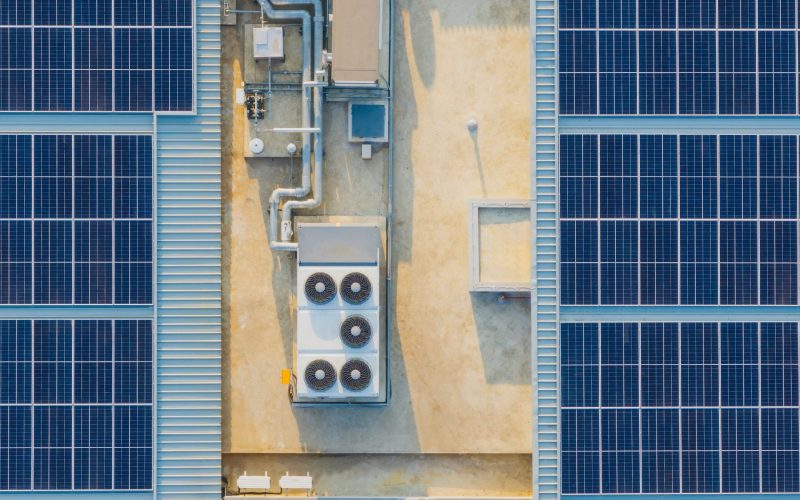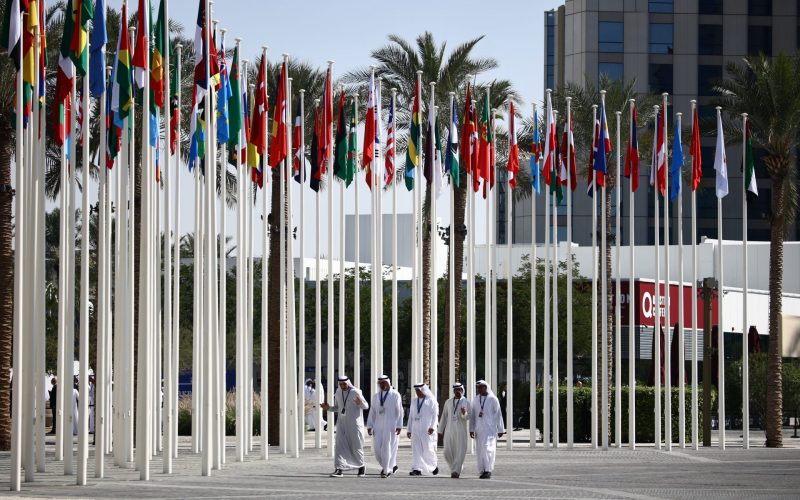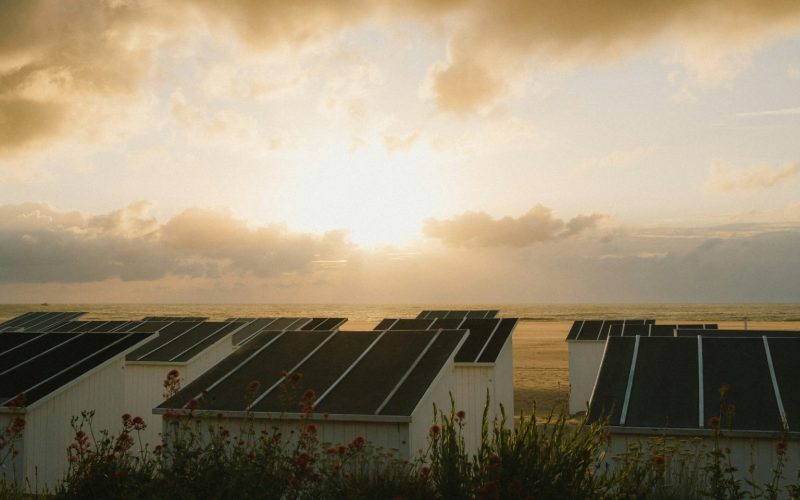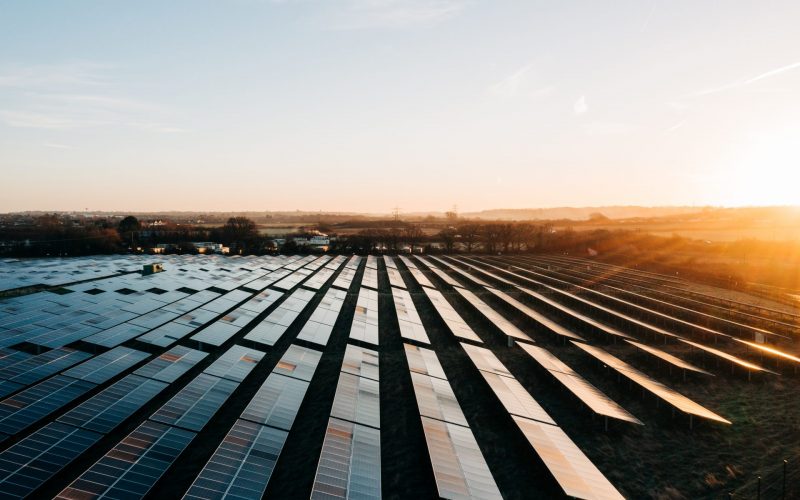Since taking office, the Trump administration has prioritised US critical minerals security through a range of domestic and foreign policy actions. These actions include possible “minerals-for-security” agreements with Ukraine and the Democratic Republic of the Congo (DRC), respectively. This explainer analyses the potential and pitfalls of these deals while placing the actions of the US administration on critical minerals in context. The article concludes with a few recommendations for mineral-rich African countries in this new era of critical minerals diplomacy.
Unpacking US Policy on Critical Minerals
US efforts to decrease critical minerals dependence on China have received bipartisan support from both the former Biden and current Trump administrations. In the first US Presidential visit to sub-Saharan Africa since 2015, outgoing President Joe Biden visited Angola to demonstrate his administration’s continued commitment to the US-led Lobito Corridor railway development project. The project intends to connect the mineral-rich countries of the DRC and Zambia to Angola’s Lobito port to help facilitate the export of critical minerals to the West across the Atlantic Ocean.
Since taking office, the Trump administration has doubled down on realising US critical minerals security through domestic action and international engagements. These efforts include a series of executive orders aimed at reducing the US dependence on China for critical minerals and ramping up production of domestic mines, among others. These actions are driven primarily by anxieties about US overdependence on Chinese critical mineral supplies and the willingness of the Chinese government to weaponise this dependence as seen in the range of export restrictions that have been implemented since December last year.
As part of their retaliation against the most recent round of US tariffs, the Chinese government responded by tightening export controls and instituting licensing requirements for several critical minerals. At the time of writing, the Trump administration has ordered a probe into potential new tariffs on all US critical minerals imports. The probe will include a review of US vulnerabilities for the processing of critical minerals and explore how foreign countries could be distorting mineral markets.
The precedent for geopolitically-motivated restrictions on rare earth elements (REEs) goes back to 2010. A maritime dispute between China and Japan led the Chinese government to impose an embargo on REEs for two months. In response, the Japanese government took a series of policy steps to diversify their supply, which resulted in Japanese reliance on Chinese REEs falling from 85% in 2009 to 58% in 2018. In contrast, the US remains almost entirely reliant on China for the processing of REEs, almost 15 years later.
It is difficult to overstate the extent of China’s control over critical mineral supply chains. Since the early 2000s, China has taken both policy and diplomatic actions to establish itself as the pre-eminent supplier and processor of critical minerals, including REEs. Currently, Chinese companies are benefiting from having moved early to establish themselves in key extractive sectors during the 2000s and 2010s.
For example, China’s present control over mineral supply chains in the DRC stems from landmark agreements such as the 2007 Sicomines resource-for-infrastructure agreement, which allowed Chinese companies to access copper and cobalt reserves in the DRC in exchange for investments in public infrastructure. More recently, China has made significant investments in critical minerals projects across the continent. For example, in Zimbabwe, Chinese companies have invested over $1.4 billion in acquiring lithium projects in Zimbabwe since 2022. While states such as the US are increasingly using industrial and trade policies to intervene in the supply chains of critical minerals, whether these new policy measures will be successful in their objectives remains an open question. Many policy analysts are sceptical of the effectiveness of these new trade policy measures and have highlighted some of the limits and risks involved.
For example, the Trump administration’s new wide-ranging tariff proposal was noteworthy for the exemptions it included for critical minerals, semiconductors and other strategic renewable energy technologies. Patrick Schröder, Senior Research Fellow at Chatham House, has highlighted the limits and vulnerabilities of this erratic policymaking style on minerals security, saying that “the critical minerals exemption … underscores the reality: the US cannot afford to disrupt these flows without jeopardising its own economic and technological ambitions. It seems that even for the Trump administration there are limits to economic nationalism.”
Writing about the recent failure of the US-backed Balama graphite mine in Mozambique, Cullen Hendrix, Senior Fellow at the Peterson Institute for International Economics, has also raised his doubts about the US derisking strategy, saying that “just as there is no free lunch, there is no true de-risking. Rather, there is the substitution of the known risk associated with a dominant, mature – albeit increasingly antagonistic – producer (China) for the less understood risk of emerging and frontier markets and producers.” This same strategic dilemma of substituting dependence on China for intervention in risky mining jurisdictions to access critical minerals applies to both Ukraine and the DRC.
President Trump’s recent actions on critical minerals are also a risk due to the unintended knock-on effects they are bound to have on mineral-rich developing countries. For example, while key South African mineral exports were excluded from the original tariff proposal, these new measures can still have serious unintended consequences on other important sectors such as automotives – a sector heavily dependent on the Platinum Group Metals (PGMs) produced in South Africa. Hugo Pienaar, Chief Economist at the Minerals Council of South Africa, has raised the Council’s concerns over how these tariffs could affect sectors dependent on mineral inputs, explaining that “even though PGMs are excluded from the latest round of tariff increases, vehicle prices in the US will increase because of the 25% tariff the Trump administration has imposed on all vehicle imports … If car and truck sales slow, demand for PGMs will reduce and result in volatile near-term prices.”
From this example, it is clear that both Trump’s tariffs and China’s export restrictions are examples of how unilateral trade actions in an interconnected global economy can produce unexpected shocks that go well beyond the originally intended scope or targets of these policies.
Understanding the Minerals Proposal in Ukraine
On 18 April 2025, Ukraine’s government announced that it had agreed to an outline of a minerals deal with the US. The signed memorandum of intent would pave the way for an economic partnership between the two countries including the setting up of an investment fund for the reconstruction of Ukraine. At the time of writing, officials from both countries have expressed their desire to finalise the text of the agreement by 26 April 2025. From the US perspective, the proposal represents an opportunity for the US to end the war between Ukraine and Russia and to recover billions of dollars in US military assistance to Ukraine through the exploitation of the country’s critical mineral and fossil fuel resources. From the Ukrainian perspective, the rationale behind the proposal is based on a potential security guarantee that would see joint US-Ukraine investment in Kyiv’s critical minerals incentivise the US to uphold and defend Ukrainian security and stability. However, the latest draft proposal follows earlier versions in omitting any direct mentions of security guarantees, a provision that the Ukrainian administration has consistently pressed for.
At first glance, the deal could help the US reduce its critical minerals dependence on China and recover costs from its military assistance to Ukraine, however, there are at least three reasons why a minerals deal is unlikely to achieve its aims. First, existing geological mapping data of Ukraine’s mineral resources is decades old. In the absence of modern up-to-date geological assessments, it is difficult to tell whether Ukraine’s REEs and other critical minerals can be feasibly extracted. Second, in the absence of US security guarantees, private mining companies are unlikely to invest in Ukraine due to ongoing security risks that could jeopardise the future stability of long-term mining projects. For example, much of Ukraine’s existing mineral deposits are located in or on the border of territory occupied by Russian forces in the Eastern part of the country. Finally, the ongoing war has seen Russian invading forces destroy much of Ukraine’s energy and transport infrastructure that would be necessary to make mining projects viable.
Understanding the Minerals Proposal in the DRC
The DRC is home to vast reserves of critical minerals, many of which have fuelled periodic conflicts in the region for decades. In January of this year, the March 23 Movement (M23) rebel group, supported by neighbouring Rwanda, took control of the easternmost city of Goma in the North Kivu province of the DRC. The ongoing conflict with M23 rebel group, who have seized control of mines in the occupied territories, has led to the death and displacement of thousands of people.
Reports from the UN have suggested that Rwanda’s involvement with the M23 is motivated by a desire to access the region’s significant mineral resources and that many minerals are being illegally smuggled out of the country. For its part, the EU has also faced criticism and calls to suspend its Memorandum of Understanding (MoU) with Rwanda on critical minerals, given the likelihood that these minerals could be fuelling the conflict.
Wishing to replicate the logic informing the Ukrainian minerals deal, the Congolese government has approached the Trump administration with its own proposed minerals agreement in exchange for US security support to defeat the M23 rebel group. This offer of a ‘minerals-for-security’ arrangement was prompted by two factors. First, President Felix Tshisekedi has drawn parallels between the DRC-Rwanda conflict and Russia’s invasion of Ukraine in the hopes of securing similar US military assistance to defeat the rebel forces and stop the plundering of the country’s mineral resources. Second, dissatisfaction with China’s continued manipulation of the cobalt market has caused fatigue among Congolese policymakers, who have responded by implementing a four-month cobalt export ban to address surplus supply and declining prices for the mineral. By courting the US in this way, the DRC hopes to simultaneously resolve its security crisis and counterbalance China’s dominance of its mineral sector. While minerals-for-security arrangements of this kind may appear to have a certain surface-level logic, there are several underlying problems, which threaten their potential implementation. Apart from the risks of the US becoming involved in a fluid and complex security environment, several significant challenges have hindered the DRC’s ability to consistently attract Western mining investment, including ongoing conflict, a difficult business environment, Chinese market dominance and a lack of infrastructure such as energy and rail.
Christian-Géraud Neema, Non-Resident Scholar at the Carnegie Endowment for International Peace, has echoed this sentiment, saying that “even though the DRC offer mirrors the Ukraine minerals deal (tweaking the Chinese ‘mines for infrastructure’ for ‘mines for security’ barter model) and seems to make political sense, there is no guarantee of success. The DRC has considerable mining potential, but it remains a high-risk jurisdiction for international mining companies.” Moreover, unlike many Chinese mining companies that receive support from the state, Western economies are characterised by a split between the public and private sectors, which means that governments cannot compel mining companies to make investments in risky mining jurisdictions. It is, therefore, unlikely that the US will be able to incentivise many private sector mining companies to participate in such an arrangement, given the fact that the challenges that caused these companies to originally divest from the DRC are still present.
Drawing Parallels Between Ukraine and the DRC
The mineral-related rhetoric and actions of the Trump administration highlight the noteworthy parallels between Ukraine and the situation of many mineral-rich African countries, such as the DRC. Far from being an unprecedented occurrence, Ukraine finds itself in a similar situation to many African countries whose agency in navigating peace processes is constrained by external interests in natural resources such as critical minerals. For decades, African countries have been subject to proxy conflicts, externally mediated peace processes, and interventions driven by foreign powers, with little concern for the immediate needs and interests of conflict-afflicted populations. In this way, the ongoing situation in Ukraine mirrors the African context whereby natural resources have historically drawn in external actors whose interests are not aligned with sustainable development or lasting peace on the continent.
For example, actors such as the Russian Wagner Group have an established history of exploiting instability on the African continent by supporting imperiled national governments in times of conflict in exchange for increased access to natural resources such as gold. To this end, many policy commentators have highlighted the parallels between the experiences of colonialism in Africa and the contemporary situation in Ukraine. For example, Emily Iona Stewart, Head of Policy and EU Relations at Global Witness, has described the proposed US-Ukraine deal as follows: “This is neocolonialism at its worst, dressed up as economic cooperation and development aid, and serves as a stark warning of how mineral wealth can become both a bargaining chip and a liability.”
Embracing Strategic Neutrality
A pitfall for mineral-rich African countries in this new era of critical minerals competition is being drawn further into great power competition. Bloc dynamics around critical minerals are already forming and there is a danger that zero-sum competition between Western countries and China could play out in an unpredictable fashion for developing countries.
While these unfolding dynamics do also provide mineral-rich regions such as Africa with greater agency to negotiate favourable terms, there is a wider risk that growing resource nationalism across the world may also undermine multilateral processes aimed at securing sustainable supplies of minerals for the global energy transition. In other words, there is a danger that a disproportionate focus on securing these minerals for security or economic reasons may risk paradoxically worsening regional conflicts and undermining the justice of the global energy transition. In addition, ongoing trade tensions between the US and China can also expand opportunities for African countries to engage other regions, such as the EU, who are also actively seeking to reconfigure mineral supply chains. For example, at the recently held EU-South Africa Summit, the parties agreed to open negotiations on establishing an MoU on critical minerals – the EU has struck similar mineral cooperation agreements with other African countries. In addition, the EU reaffirmed its support for South Africa’s Just Energy Transition Partnership after the withdrawal of the US, as well as the country’s G20 presidency which will seek to work towards a “grand bargain” on critical minerals.
In this way, mineral-rich countries such as South Africa can adopt a policy of strategic neutrality to avoid becoming unnecessarily entangled in the politics of this new era of critical minerals diplomacy. This preference towards a non-aligned minerals policy is echoed by the director of the Project on Critical Minerals Security at the Centre for Strategic and International Studies, Gracelin Baskaran, who has argued that “minerals can be something on which African countries – and emerging markets as a whole – can truly take a ‘non-aligned’ position, working with the country that gives you the best deal in terms of expanding investment, building infrastructure, pursuing value addition and so on.”
Planning for Value Addition
While the heightened geopolitical focus on critical minerals does provide mineral-rich African countries with new bargaining power, translating this focus into feasible value addition projects will require well-articulated and executed reforms. This means that national government must consider the key drivers of value addition feasibility such as policy stability, size of mineral supply, good governance and the availability of key infrastructure.
In light of the growing competition for Africa’s critical minerals, Director of the Natural Resource Governance Institute, Suneeta Kaimal, has stressed the importance of African governments having a clear plan for their mineral ambitions. She says, “A key takeaway from our work is that the root of successful value addition is a well-articulated strategy. Such a strategy helps inform government decision-making … It also attracts investment by signaling that a government has a plan that accounts for economic realities and the current impediments and how to overcome them.” Fortunately, African policymakers will not need to start from scratch as there is a collection of policy guidance frameworks they can draw on, such as the African Mining Vision, UN Panel Report on Critical Energy Transition Minerals, and the recently released African Green Minerals Strategy. Moreover, many African countries also have mixed past experiences with models such as resource-for-infrastructure agreements that they can learn the relevant lessons to improve how they manage any new mineral agreements.
Conclusion
While the extraction of natural resources has long been associated with conflict hotspots, the emergence of these new minerals-for-security agreements sets a troubling precedent. The ongoing security situations in both Ukraine and the DRC demonstrate how peace processes in these countries are often subject to the influence of foreign powers whose overriding interest is in accessing natural resources rather than supporting lasting peace.
Until now, the debate around critical minerals has been dominated by the needs and priorities of foreign powers with Africa’s priorities and needs acting as an afterthought. To reclaim the narrative around critical minerals and assert greater agency over its natural resources, African countries will have to navigate a complex geopolitical environment and manage important policy trade-offs. Embracing strategic neutrality abroad and developing plans for value addition at home are good ways to start.

